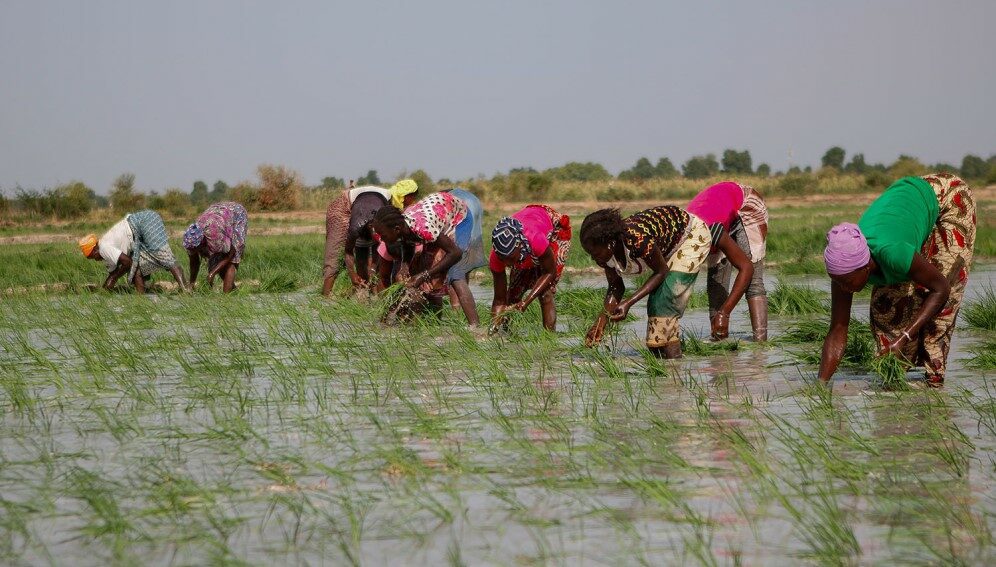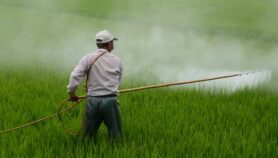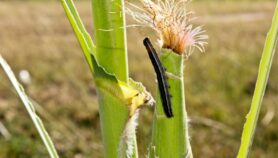30/03/22
Africa’s rice-farming villages more prone to malaria

By: Onyango Nyamol
Send to a friend
The details you provide on this page will not be used to send unsolicited email, and will not be sold to a 3rd party. See privacy policy.
[NAIROBI] Malaria has become more common in African villages with irrigated rice fields in the last 20 years, highlighting the need for improved cultivation methods to keep mosquito numbers low, a study suggests.
The study, published in the March edition of The Lancet Planetary Health, shows that since 2003, the number of mosquitoes found in rice farming villages were six- to eight times higher in non-rice farming villages, with malaria cases almost twice as high in rice farming villages.
This is a change from what was seen in the 1990s when, in settings where malaria transmission was relatively intense, studies found no tendency for malaria incidence to be higher in villages with irrigated rice fields than in those without.
“Rice fields are ideal breeding sites for African malaria mosquitoes.”
Kallista Chan, London School of Hygiene & Tropical Medicine
Malaria prevalence among villagers in rice-growing areas was similar to, or lower than, those in non-rice-growing areas. This became known as the “paddies paradox”, explains Kallista Chan, study co-author and a doctoral candidate at the London School of Hygiene and Tropical Medicine (LSHTM).
“Rice fields are ideal breeding sites for African malaria mosquitoes,” says Chan. “Their growing conditions are exactly those preferred by the malaria mosquitoes Anopheles gambiae: fresh sunlit water of two to ten centimetres in depth, still or very slow flowing and relatively clean.”
The results were based on 53 studies conducted between 1971 and 2016 in 14 African countries including Burkina Faso, Cameroon, Cote d’Ivoire, Gambia, Kenya, Madagascar, Mali, Nigeria, Rwanda, Senegal, Sierra Leone and Tanzania.
Chan tells SciDev.Net that the study’s focus was specifically on the role of agriculture in influencing malaria, and how practises can be adapted to curb malaria rather than fuel it.
She believes that antimalarial interventions such as insecticide-treated nets may be part of a short-term solution but are not sustainable.
“Malaria is a major public health problem in Africa,” says Chan. “This region harbours over 90 per cent of all global malaria deaths and whereas in the last two decades there has been unprecedented success in reducing malaria transmission, rice-growing areas can remain as malaria hotspots, which can be a barrier to elimination.”

She adds that rice-growing areas, especially those that are irrigated, are rapidly increasing in Africa because of population growth and changing consumer behaviour. Governments have been pushing for more rice production in Sub-Saharan Africa for the past decade.
Jo Lines, a co-author of the study and professor of malaria control and vector biology at LSHTM, says that the agricultural sector should lead efforts in identifying malaria-free rice cultivation practices, with technical input such as mosquito surveillance when the practices are being identified from health experts.
The findings of the study also need to be flagged at country and continental-level to align efforts for rice farming-based malaria control, she says.
Donald Apat, programme manager of Global Fund Malaria Project at Amref Health Africa, says that the study could have important implications amid the growth of urban populations.
These findings, according to Apat, show that with rapid unplanned urbanisation, especially in Sub-Saharan Africa, leading to more demand for food and other services, there is a risk of introducing crop production practices that increase the transmission of vector-borne diseases and indeed, malaria.
Proper management of the rice fields and development of a holistic malaria control strategy based on local data should be put in place to stem the menace in rice-growing areas, says Apat.
“Adoption of malaria vector control practices at scale in these settings would include personal protection using insecticide-treated bed nets, improved housing designs and screening of windows, doors and eaves, among others,” he tells SciDev.Net.



Environmental management is also crucial for the elimination of malaria and should be part of national strategic plans geared towards malaria control and subsequent elimination, according to Apat.
“This calls for multisectoral collaboration integrating health actions with sectors responsible for agriculture,” Apat explains, adding that communities should be empowered to participate in initiatives that would contribute to sustainable rice food production while also helping to control malaria.
This piece was produced by SciDev.Net’s Sub-Saharan Africa English desk.













